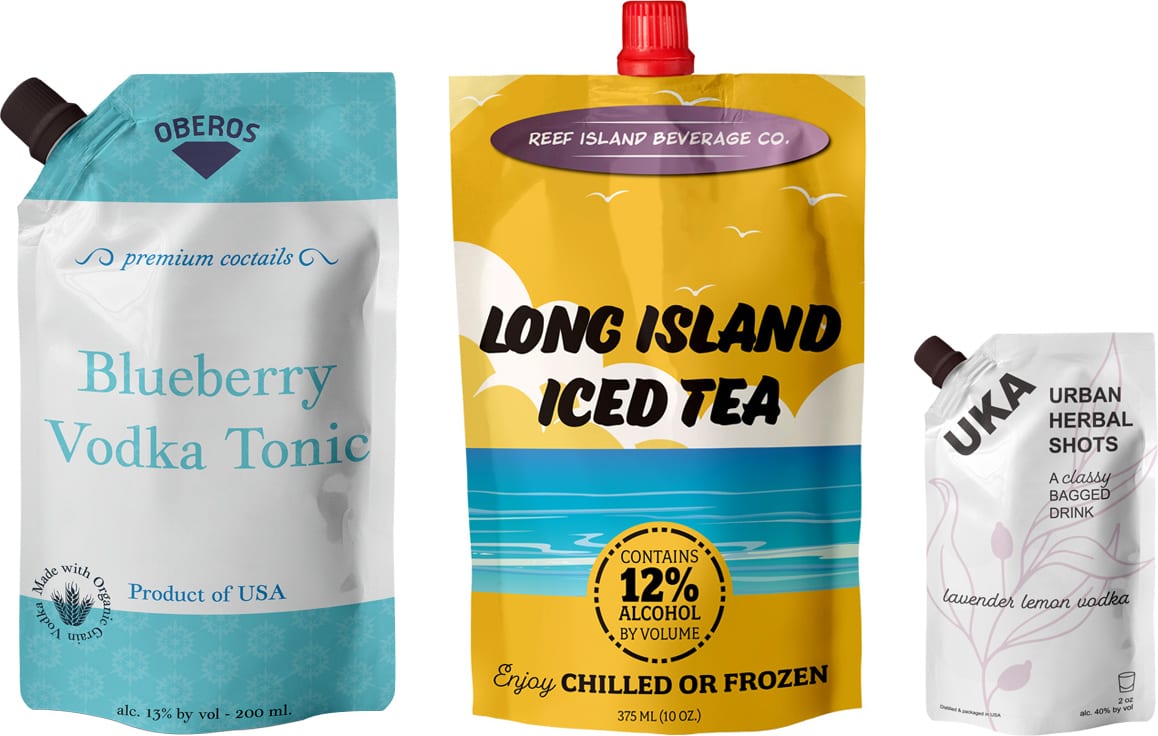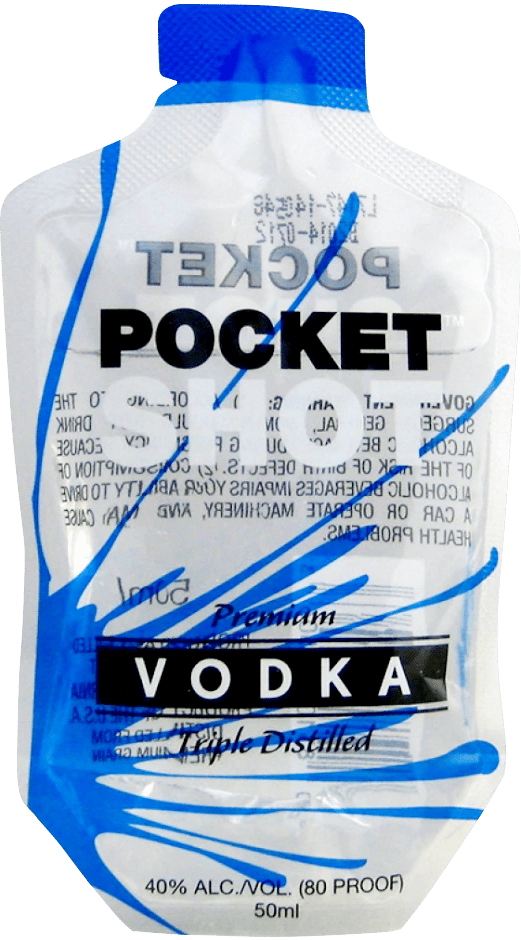

Flexible Packaging for Wine & Spirits Takes Off, Heads in New Directions
by Brad Addington
Flexible Packaging for Wine & Spirits Takes Off, Heads in New Directions
by Brad Addington
The idea of using flexible packaging for wine and spirits is gaining traction by the day, and with good reason. Reduced costs, increased sustainability and the ability to create eye-catching designs that jump off the shelf are just three arguments for moving away from rigid packaging.
“Consumers have reshaped their views about sustainable packaging in ways that are forcing the entire value chain to act more quickly,” Fres-co System USA, a provider of flexible packaging systems, noted recently. “Packaging that is lightweight, requires less energy to produce and transport, emits less greenhouse gases during production, and has an efficient product-to-package ratio all contribute to a reduced carbon footprint.”
Bag-in-box has been a popular packaging option for wine for some time now and has the benefit of requiring less sourcing of materials than bottled wine (bag and cardboard only vs. bottle, label, cardboard and cap). However, other wine packaging options are coming to the fore.
ADVERTISEMENT
The flat-pack plastic bottle created by London-based Packamama is just one example of an alternative to the traditional wine bottle that checks many boxes for both producers and consumers.
The flat-pack bottle is made from 100% recycled PET plastic and also is fully recyclable. Furthermore, heavier and bulkier glass wine bottles require more fuel to transport and thus entail a larger carbon footprint. And the flat-pack plastic bottle eliminates the concern about glass shattering during transport.
Meanwhile, High Key Wine Co. wants people to know that “Wine in a pouch is a thing now,” as the company boldly states on its website.
Offerings include 187-ml pouches of sweet white, dry rosé and sweet rosé wine.
The company touts the wine pouches as a great lightweight option for hikers to stick in their backpacks. The pouches also provide a solution to drinking wine at places that might have glass restrictions, such as poolside, under a beach umbrella or on a boat. The pouches also are ideal for concerts, festivals and sporting events.

The pouch also comes with a straw that creates a liquid tight seal, such that “spills are a distant memory,” the company notes.
San Dimas, Calif.-based CarePac makes a case for pouched alcohol drinks versus other containers – whether for pre-mixed cocktails, vodka mixers, wine or other beverages.
“The flexible nature of the film material mean consumers can pack a cooler with more drinks. A single-serve spouted pouch is a customer favorite to use on the go – traveling, picnicking, boating, hiking, barbecuing and many more recreational activities,” the company said.

CarePac further notes that custom spouted pouches are great for promotion. The company’s flexible barrier films have several layers and are printed before getting made into the finished packaging product.
“Branding in the alcoholic drinks market is extremely important. It takes a potential customer about three seconds to make a decision on whether to pick up your brand or move on to your competitor,” CarePac said.
Meanwhile, Pocket Shot focuses on what the company’s name implies – world-class liquors packaged within an environmentally friendly plastic pouch “which can slide into a bag or a pocket without issue.”
One of the company’s most popular products is the 50-ml (1.7 fluid ounces) Vodka Pocket Shot.
“The frustration of enjoying a drink in public, or in an area or at a time when doing so would draw negative attention, has been entirely eliminated,” the company notes, adding that the Vodka Pocket Shot “is perfect for those who want to have a great time with excellent-tasting liquor, without paying an arm and a leg for a shot at a bar or purchasing an entire bottle.”

In the general context of packaging options for wine and spirits, Chicago-based QualSights notes that beverage marketers could potentially benefit from the company’s recently launched Product Consumption Intelligence, a platform that passively measures human behavior post-purchase.
The platform takes shape in the form of cloud-connected smart coasters that capture what, when, where and how much of a product is used after it is purchased. This technology is used in studies and can fit for a variety of CPG products, including household goods, food and beverages, wine and spirits, beauty and more.
“In the United States, Americans purchase roughly $4 trillion worth of goods. However, until today, a black box of understanding has existed between purchase and repurchase. We currently rely on claimed behavior through surveys to track consumption, but this data is highly unreliable and inaccurate because of people’s lack of recall and inherent biases,” QualSights explains, adding that with the new platform it is now possible to capture every usage occasion — down to the SKU, gram and second — in real time.
“Consumers have less discretionary income these days, and there is no doubt this is impacting brands,” QualSights CEO Nihal Advani said. “Gathering deep, authentic insights about customers’ changing needs are vital to a brand’s success.”
